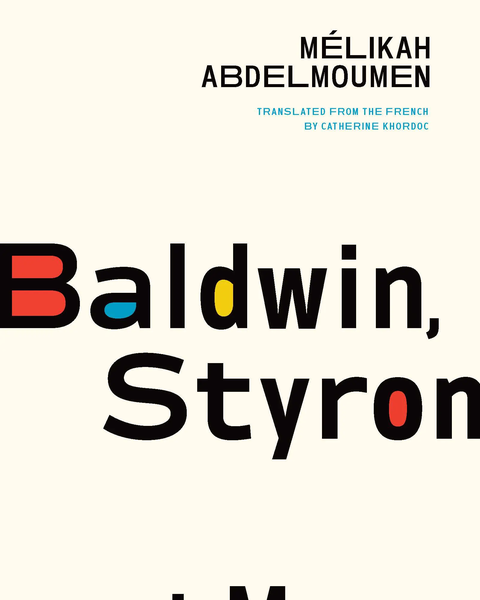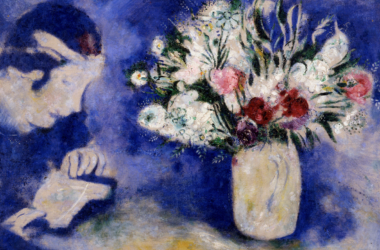Cigarette smoke caresses the wooden beams of William Styron’s colonial Connecticut home. The piercing smell of whiskey drifts across the creaking pine floors. In the airy afternoons, one can hear the clacks of dueling typewriters, marking each side of the historic property as their own. But into these bristling nights, Styron and his houseguest, James Baldwin, find themselves in stimulating discussions: Arguing, compromising, and honing their literary precision into thoughtful exchanges on race, religion, and selfhood. As the grandsons of an enslaver and an enslaved person, respectively, Styron and Baldwin contemplate the nuances of whiteness and Blackness in 1960s America—exploring how writers can contribute to this cultural dialogue that shapes a shared history and what it means to exist in a racist world.
Québécoise writer and magazine editor Mélikah Abdelmoumen’s newly translated book, Baldwin, Styron, and Me, is a hybrid fiction-memoir that weaves the encounters between literary icons Baldwin and Styron—during Baldwin’s nine-month stay with the Connecticut author—into accounts of her own life in Quebec. Born to a Tunisian father and a Québécoise mother, Abdelmoumen navigates the complexities of her cultural identity in a Canadian province deeply tied to a unified, and now racialized, provincial selfhood.
Abdelmoumen explores the complex history of racial congruence through Baldwin and Styron’s relationship. She gives fictionalized dialogue to their encounters, illustriously assuming the literary voice of each author to imagine how they may have spoken to each other throughout their lengthy, conversational nights. It was during this stay that Baldwin encouraged Styron to embark on his new project, the novel The Confessions of Nat Turner. Told from the perspective of Nat Turner, an enslaved man in the Antebellum South, Styron took from the minimal written records of Turner’s life to tell the story of his rebellion against enslavement. Abdelmoumen describes the novel’s initial critical acclaim and subsequent critique. Whether Styron’s creative liberties accurately or respectfully depicted the internal experience of Black identity during slavery is still carefully debated.
One writer featured in the literary critique Nat Turner: Ten Black Writers Respond, Vincent Harding, wrote,
“There can be no common history until we have first fleshed out the lineaments of our own, for no one else can speak out of the bittersweet bowels of our blackness.”
When Abdelmoumen’s Styron questions his ability to understand Blackness 100 years prior, Baldwin responds, “In the way that his story resonates in our time. Mine, and yours. By remembering that we are inextricably connected and that your story is my story and that my story is yours.”
Through these imaginations of the past, Abdelmoumen reminds that in the wake of tragedy and trauma, we can only heal our wounds through empathetic, understanding, and direct confrontation with this problematic past. At the same time, she questions to what lengths one could accurately explore the Black identity while using a privileged, white pen: How could Styron even begin to capture the intense legacy of racism and intersectionality in America?
This anecdote of the past seamlessly transports us into Abdelmoumen’s present: On her way home from work while living in Lyon, France one night, she was assaulted, mugged, and called a racial slur. She speaks of her experience as the “Other” in both Québécois and French society, as someone who existed within Quebec and Tunisia in cultural tandem. She also reminds her Québécois readers of the province’s recent spike in racial injustices and hate crimes.
Abdelmoumen posits that once we identify violence and ugliness for what it truly is, we can truly move forward—but not so fast that we forget the traumatic truths of the past. Through these literary explorations, we can listen to and learn from those whose experiences differ greatly from our own. It is in this space that Abdelmoumen realizes her own identity—not in rigid, definitive permanence, but as a fluid thing to be molded and shaped throughout time.
“Following in no one’s footsteps, I chose my identity: It is not, nor will it ever be, fixed,” Abdelmoumen asserts.








